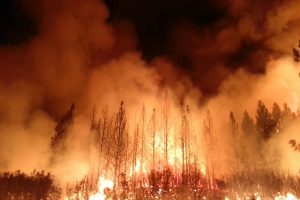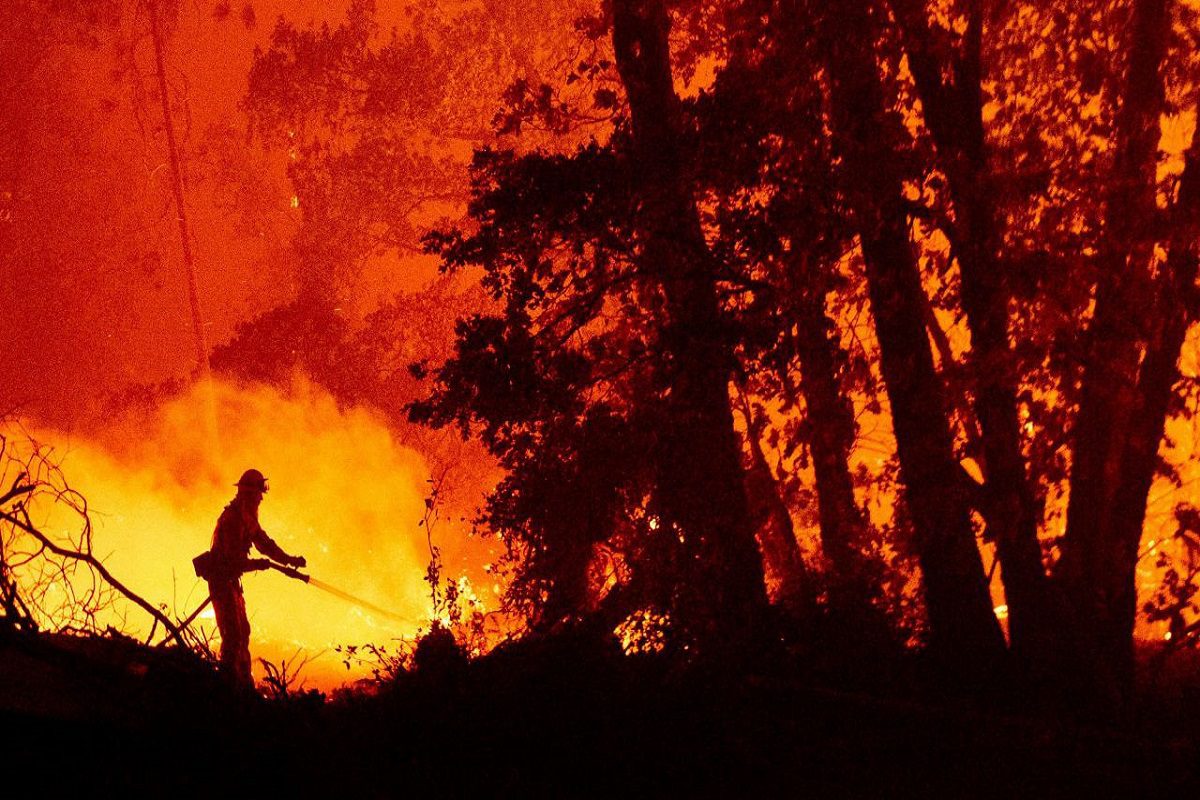Canadian Wildfire Smoke: As the fiery grip of over 1,000 devastating wildfires engulfs vast swathes of Canada, a far-reaching veil of thick smoke has descended upon several northern US cities, casting a suffocating shroud of poor air quality and pollution.
The ramifications of this environmental disaster have sparked serious health concerns for the residents of cities like Chicago, Illinois, Minneapolis, Minnesota, and Detroit, Michigan, which now find themselves unceremoniously listed among the top 20 most polluted cities on a global scale, as reported by the esteemed pollution tracker IQAir.
The consequences of these blazing infernos have been acutely felt across the Great Lakes region, where the drifting smoke continues to spread its ominous reach. With more than 670 of these menacing wildfires labeled as “out of control” by the Canadian Interagency Forest
Fire Centre, the severity of the situation has escalated dramatically, far surpassing the 880 fires recorded just the previous week.
The epicenter of this destructive wildfire crisis lies firmly in British Columbia, where over 460 fires continue to dance with unbridled fury, charring vast expanses of land and blanketing the region in an eerie and suffocating haze.
Alarmed by the looming health crisis, the National Weather Service (NWS) in the US has promptly issued air quality alerts, stretching across wide swaths of Michigan and parts of Minnesota, Wisconsin, Illinois, and Indiana, warning millions of residents about the hazardous conditions that loom.
In a harrowing display of nature’s wrath, last week’s onslaught of Canadian wildfire smoke had already triggered air quality alerts in over a dozen US states, stretching from Montana to Vermont, and even extending its suffocating grasp as far south as Alabama.
The current trajectory of the drifting smoke is projected to take it eastward through the Great Lakes region, dissipating its choking grip by Wednesday, just as the upper Midwest braces itself for a relentless heatwave. Meteorological forecasts have predicted that
Minneapolis may soon scorch under the relentless sun, reaching a sweltering 100°F, while Chicago’s temperatures are expected to soar into the upper 90s, testing the resilience of its citizens.
Confronted by the mounting health risks, the Environmental Protection Agency (EPA) in Illinois has issued a crucial “Air Pollution Action Day” commencing immediately and extending through Tuesday. T
he persistent presence of wildfire smoke has led to escalated air pollution levels, warranting the issuance of similar advisories in Michigan and Wisconsin, as authorities endeavor to safeguard public health.


READ MORE: Janus white dwarf star: Unveiling Janus The Unique with Two Faces
As the environmental crisis unfolds, officials in Chicago are issuing cautionary measures to mitigate health risks. Residents with chronic respiratory conditions are being earnestly advised to curtail outdoor activities, and authorities have expressly discouraged strenuous outdoor activity for vulnerable groups, including children, teenagers, seniors, individuals with heart or lung ailments, and pregnant individuals.
In response to the encroaching environmental challenges, the city of Chicago is actively imploring its citizens to consider wearing protective masks, limiting their outdoor exposure, seeking shelter indoors, employing air purifiers, and tightly sealing windows to prevent further smoke infiltration.
The city’s collective efforts strive to shield the well-being of its inhabitants amidst the unfolding environmental catastrophe.
As these wildfires continue their unyielding rampage, both the US and Canada stand united in their fight to combat these infernos and mitigate the ensuing adverse impacts on air quality and public health.
he combined forces of nature and humanity endeavor to contain and control the ferocity of the flames, a testament to the resilience and determination of both nations in the face of environmental adversity.
Our Reader’s Queries
Where are the Canadian wildfires burning?
Numerous blazes engulfed over 10,000 hectares (39 square miles), reaching the scale of “megafires.” These massive fires were exceptionally widespread this year, scorching woods from British Columbia and Alberta in the west to Quebec and the Atlantic provinces in the east, and stretching all the way to the Northwest Territories and the Yukon.
Where did the Canadian wildfire smoke reach?
Wildfire smoke estimates are depicted by contours near the surface. Smoke from wildfires in Western Canada swept across the Midwest and Northeast of the United States, obscuring the blue sky and sun on Monday. Dozens of cities were blanketed with unhealthy air, prompting warnings to limit outdoor activities.
Where are the Canadian wildfires 2023?
Fires scorched over 802,000 hectares in the British Columbia and Northwest Territories border area. A separate fire devoured more than 1.2 million hectares near James Bay in northern Quebec.
What started Canadian wildfires?
All 10 provinces in Canada are currently facing unusual dryness, and some are even experiencing moderate to severe drought, as per the Canada Drought Monitor. The hot and dry weather conditions are also increasing the chances of lightning strikes. Typically, about half of Canada’s wildfires are ignited by lightning strikes during a regular season, however, these fires are responsible for over 85% of the total wildfire destruction.

